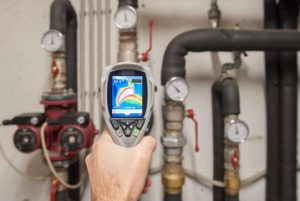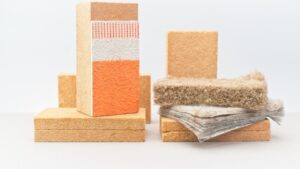Water leaks are more than just an expensive nuisance; they can damage building materials and lead to the growth of mildew and mould. That’s why it’s important to have Leak Detection San Diego equipment in place.

Acoustic testing, thermal imaging cameras, and tracer gas are some of the most effective options for locating leaks. Learn more about these technologies to make the best choice for your needs.
Ultrasonic gas leak detectors use acoustic sensors to identify fluctuations in noise that are imperceptible to the human ear. They’re unaffected by wind, leak direction or gas dilution, making them ideal for outdoor applications where traditional leak detection methods might be impacted by weather conditions. These detectors can detect a wide range of frequencies, including ultrasonic (20 to 100 kHz) sounds generated by turbulence caused by air or gas pressure leaks.
The resulting sounds can be heard through headphones or the built-in speaker on the device. Depending on the model, the device may also display a sound level or a meter reading. Some of these devices also incorporate a laser that pinpoints the location of the leak. In addition to sonic leak detection, some ultrasonic gas leak detectors can measure gas flow rate, allowing users to get a more accurate picture of their facility’s gas usage.
Some leaks in highly pressurized systems are so small that they escape without any visible evidence or even noticeable loss of air pressure. These leaks often go undetected, leading to expensive energy bills and wasted resources. An ultrasonic leak detector can help find these hard-to-find leaks and allow you to fix them before they cost your company more money.
In addition to detecting air leaks, ultrasonic gas leak detectors are also useful for locating steam traps and other compressed air leaks. They’re ideal for testing HVAC system ductwork, as well as medium to large non-sealed components and systems. They’re perfect for locating a compressed air leak in a hydraulic cylinder or pneumatic actuator.
For example, many power plants use compressed air to help actuators open and close. If the actuators are struggling to do this, it could mean a compressed air leak is somewhere in the system. An ultrasonic leak detector can help you pinpoint these hard-to-find leaks and get the equipment back up and running in no time.
INFICON’s Whisper Ultrasonic Leak Detector can also be used to find leaks in sealed enclosures, such as walk-in coolers or doors with faulty seals and gaskets. Simply place the device on a surface inside the enclosure and listen to the device for the sounds of escaping gas, which can be heard through the built-in speaker on the tool or with headphones connected to the instrument.
LiDAR
LiDAR (light detection and ranging) is a remote sensing technology that uses pulses of laser light to measure distances and create digital models of an environment. These data sets are commonly called point clouds and contain the coordinates of surrounding objects, allowing users to visualize dynamic environments.
A common example is an autonomous vehicle that relying on LiDAR to perceive its surroundings, track obstacles and navigate safely. However, it’s also useful for natural gas utilities looking to increase the scale and reliability of their methane leak detection efforts.
By transmitting a continuous wave laser through a target gas and modulating its frequency, LiDAR measures the amount of light reflected back from the surface. This data is used to determine the concentration of a methane plume and create gas density maps. This technique is faster than other scanning methods and can be used in all weather conditions, eliminating the need to send in-field personnel into dangerous environments.
Airborne LiDAR sensors offer the advantage of greater efficiency, allowing for a larger area to be scanned in one flight. They can also provide higher levels of accuracy and a better view of the environment than their ground-based counterparts, especially over longer distances. Additionally, they can be used to spot leaks on vertical surfaces that are typically difficult to reach.
Despite its benefits, LiDAR has several limitations. Rain, fog, snow and dense clouds can scatter or absorb emitted laser light, reducing accuracy and range. In addition, the high-volume of data generated by these systems can cause system overload and require substantial computing power to manage.
Nevertheless, the advantages of LiDAR make it an ideal tool for monitoring natural gas infrastructure and detecting methane leaks. The technology can help gas operators to efficiently spot and repair leaks, reducing environmental impacts and minimizing costly downtime. Bridger Photonics, for instance, is using airborne LiDAR to scan natural gas production sites in real-time to detect fugitive methane emissions. The company provides actionable data products that direct operators to the precise GPS location of a leak, streamlining the repair process and reducing total emissions.
Thermal Imaging Cameras
Thermographic imaging cameras (also known as thermal imagers) detect electromagnetic radiation invisible to the human eye. They use a sensor, which converts an electrical signal to a light-sensitive analog or digital representation of the data, and then displays that data on a screen. The information is displayed as a visual image, which allows the operator to see hot and cold objects in stark contrast. This allows users to locate and diagnose problems faster than manual inspections.
In addition to detecting leaks, other uses of infrared camera technology include firefighting, building construction, maintenance and surveillance. For example, a thermal imaging camera can be used to locate overheating joints or sections of power lines. It can also help technicians identify and correct faulty insulation that is allowing heat to escape.
Detecting a problem before it causes expensive damage can save money in the long run. Additionally, thermal imaging can help reduce energy bills by identifying areas where heating, ventilation and air conditioning are wasting energy.
Some modern thermal imagers are small enough to fit in a backpack, making them portable and easy to use. They also offer a wide range of settings and features, including adjustable colour palettes and filters, temperature calibration and display resolution. Most are also compatible with third-party software.
While a thermal imaging camera is useful for many applications, it does have some limitations. For instance, the emissivity of different materials may affect its ability to accurately reflect or transmit infrared energy. As a result, a thermal imaging camera may show a surface as a dark black or gray instead of the material’s actual temperature.
Despite these limitations, the use of an infrared camera can provide significant advantages for both professional and personal use. In the medical field, a thermal imaging camera can quickly spot elevated body temperatures, one of the earliest signs of infection or illness. It can also detect musculoskeletal problems in the neck, back and limbs and can help diagnose circulatory disorders such as deep vein thromboses. In the military, thermal imaging cameras are often mounted on vehicles and soldiers’ equipment to provide real-time battlefield intelligence.
Electrical Leak Detectors
Leak detection is a crucial component of systems that contain materials sealed in vessels or transported through pipelines. Leaks in these systems present hazards that may impact workers and the environment. They can also result in expensive penalties, fines, and environmental cleanup costs. To reduce the risk of leaks, companies must install specialized leak detection equipment. These devices identify and locate leaks in a variety of applications, including tanks, valves, connectors, pumps, compressors, open ended lines, and pressure relief systems.
Using electrical sensors, electrical leak detectors react to a change in electrode current flow from ionized gases caused by the presence of water or other conductive liquids. The resulting alarm alerts employees and building residents to a leak so that it can be addressed before it causes major damage. These sensors are a cost-effective alternative to traditional soap bubble tests and can be installed in a variety of areas, including the roofs of buildings and tank farms.
As oil continues to play a critical role in various modes of transportation, there is an increased need for advanced leak detection solutions that can provide a high level of accuracy and speed. Regulatory agencies have established strict standards for the handling and storage of fuel, and these systems can help companies meet these requirements. They can be installed in valve pits, low points, and other areas where leaks are more likely to occur.
The EPA recognizes that equipment leaks are a leading source of volatile organic compounds (VOC) and hazardous air pollutants (HAPs). These emissions can pose health concerns for children, adults with respiratory conditions, and those who work in close proximity to the leaking equipment. Fortunately, the EPA offers guidelines for companies to manage equipment leaks and develop effective leak detection programs.
In addition to the health concerns, the EPA notes that equipment leaks can cause costly damages to the facility and the surrounding environment. This is especially true for large industrial facilities where the leaks can be difficult to find and repair. Leak detection systems can improve efficiency and safety by reducing waste, saving energy, and decreasing environmental liability.


